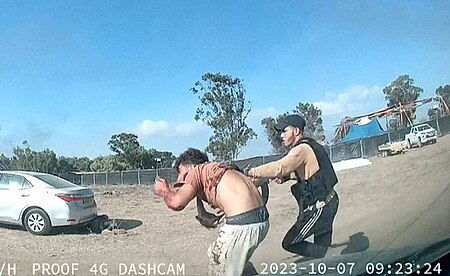Re'im music festival massacre

On 7 October 2023, the Palestinian Islamist militant group Hamas initiated a surprise invasion of Israel from the Gaza Strip. As part of the attack, 364 civilians were killed and many more wounded by Hamas at the Supernova Sukkot Gathering, an open-air music festival during the Jewish holiday of Shemini Atzeret near kibbutz Re'im. At least 40 hostages were also taken. This mass killing had the largest number of casualties out of a number of massacres targeting Israeli civilians in villages adjacent to the Gaza Strip, that occurred as part of the 7 October invasion, alongside those at the moshavim of Netiv HaAsara, Be'eri, Kfar Aza, Nir Oz and Holit.At 6:30 am around sunrise, rockets were noticed in the sky. Around 7:00 am, a siren warned of an incoming rocket attack, prompting festivalgoers to flee. Subsequently, armed militants, dressed in military attire and using motorcycles, trucks and powered paragliders, surrounded the festival grounds and indiscriminately fired on individuals attempting to escape. Attendees seeking refuge in nearby locations, such as bomb shelters, bushes, and orchards, were killed while in hiding. Those who reached the road and parking were trapped in a traffic jam as militants fired at vehicles. The militants executed some wounded individuals at point-blank range as they crouched on the ground.The details of the whereabouts and condition of the hostages are not publicly known. The massacre at the festival was the largest terror attack in Israel's history, and the worst Israeli civilian massacre ever.
Excerpt from the Wikipedia article Re'im music festival massacre (License: CC BY-SA 3.0, Authors, Images).Re'im music festival massacre
232, Eshkol Regional Council
Geographical coordinates (GPS) Address Nearby Places Show on map
Geographical coordinates (GPS)
| Latitude | Longitude |
|---|---|
| N 31.397777777778 ° | E 34.471666666667 ° |
Address
232
Eshkol Regional Council
Israel
Open on Google Maps







